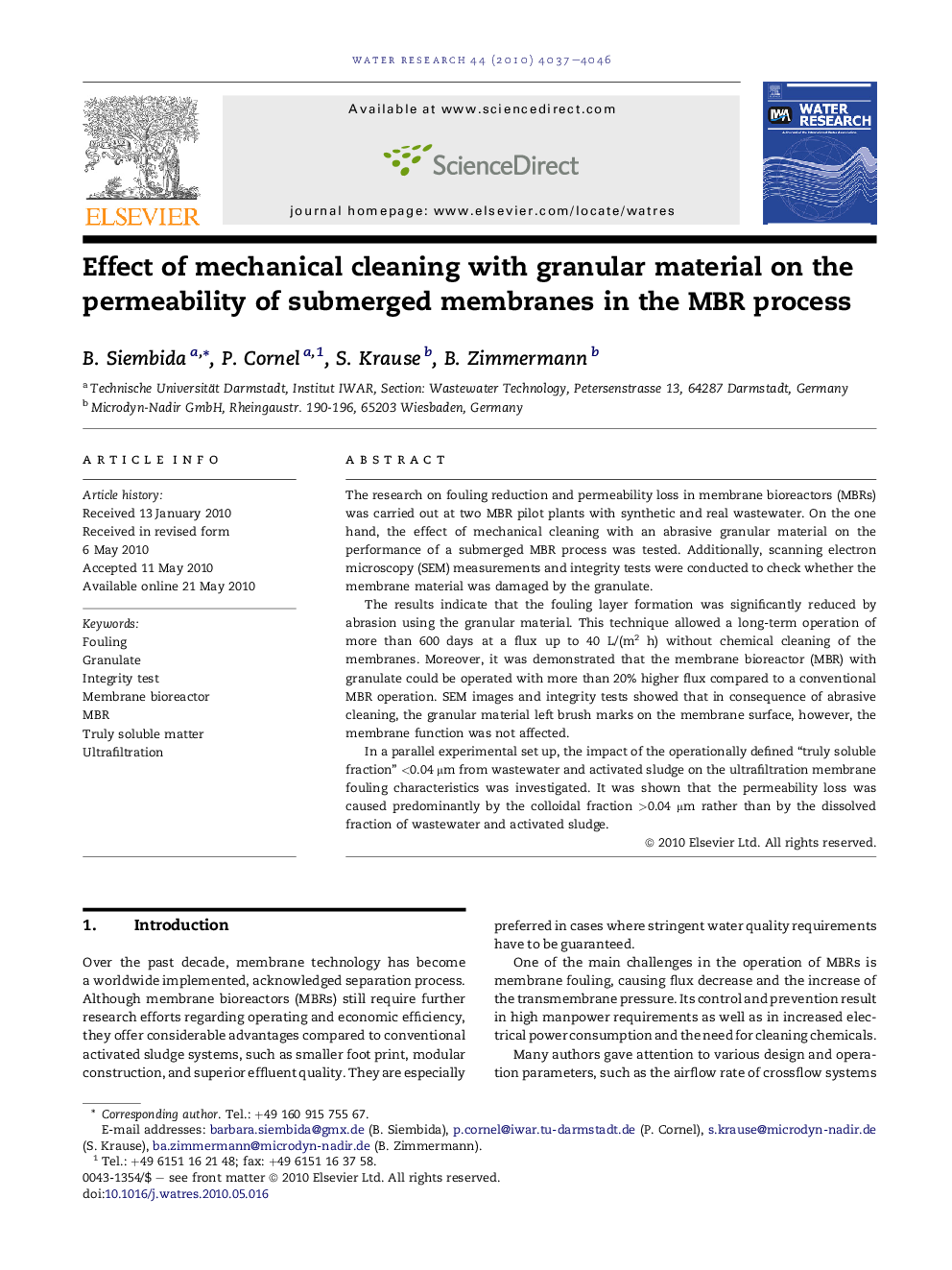| Article ID | Journal | Published Year | Pages | File Type |
|---|---|---|---|---|
| 4483645 | Water Research | 2010 | 10 Pages |
The research on fouling reduction and permeability loss in membrane bioreactors (MBRs) was carried out at two MBR pilot plants with synthetic and real wastewater. On the one hand, the effect of mechanical cleaning with an abrasive granular material on the performance of a submerged MBR process was tested. Additionally, scanning electron microscopy (SEM) measurements and integrity tests were conducted to check whether the membrane material was damaged by the granulate.The results indicate that the fouling layer formation was significantly reduced by abrasion using the granular material. This technique allowed a long-term operation of more than 600 days at a flux up to 40 L/(m2 h) without chemical cleaning of the membranes. Moreover, it was demonstrated that the membrane bioreactor (MBR) with granulate could be operated with more than 20% higher flux compared to a conventional MBR operation. SEM images and integrity tests showed that in consequence of abrasive cleaning, the granular material left brush marks on the membrane surface, however, the membrane function was not affected.In a parallel experimental set up, the impact of the operationally defined “truly soluble fraction” <0.04 μm from wastewater and activated sludge on the ultrafiltration membrane fouling characteristics was investigated. It was shown that the permeability loss was caused predominantly by the colloidal fraction >0.04 μm rather than by the dissolved fraction of wastewater and activated sludge.
